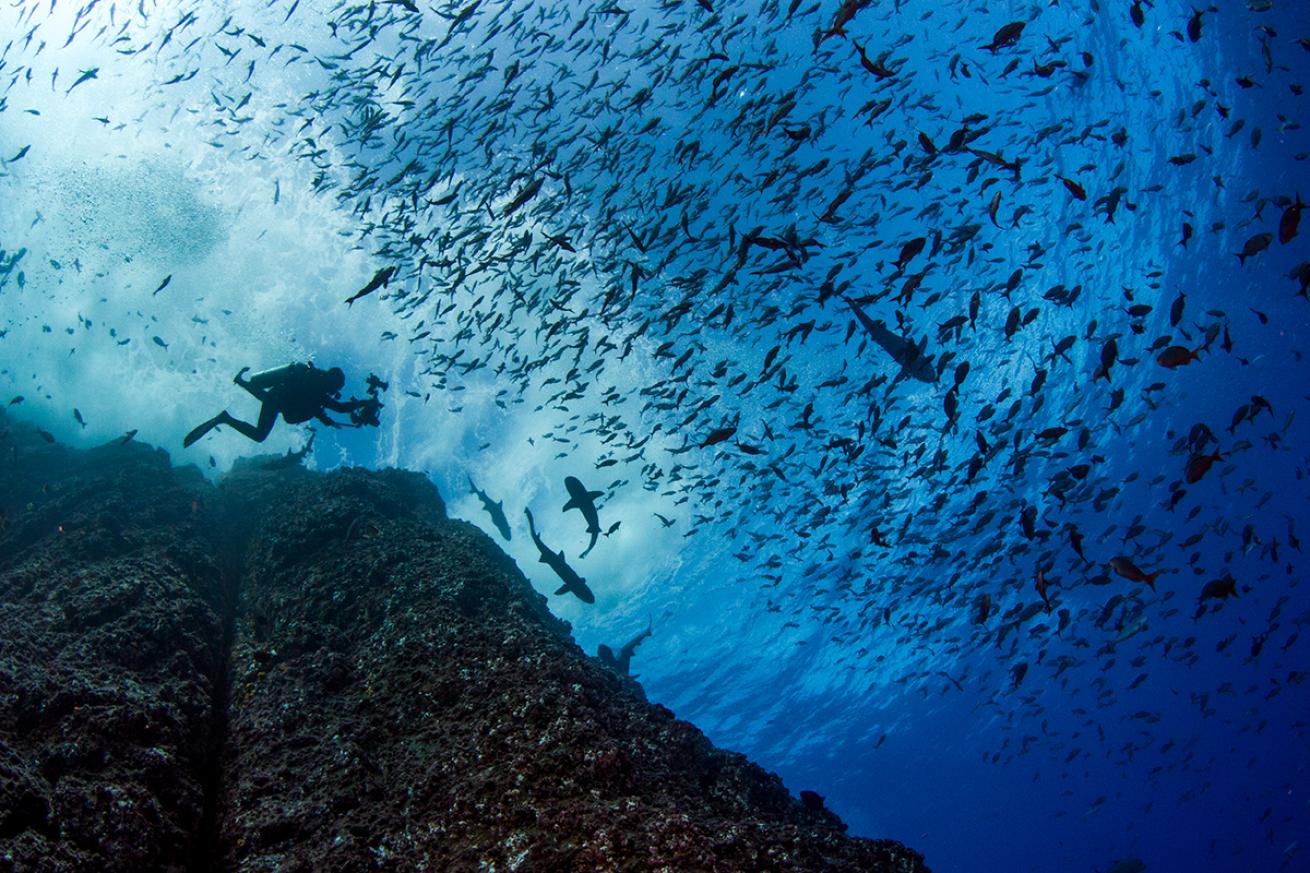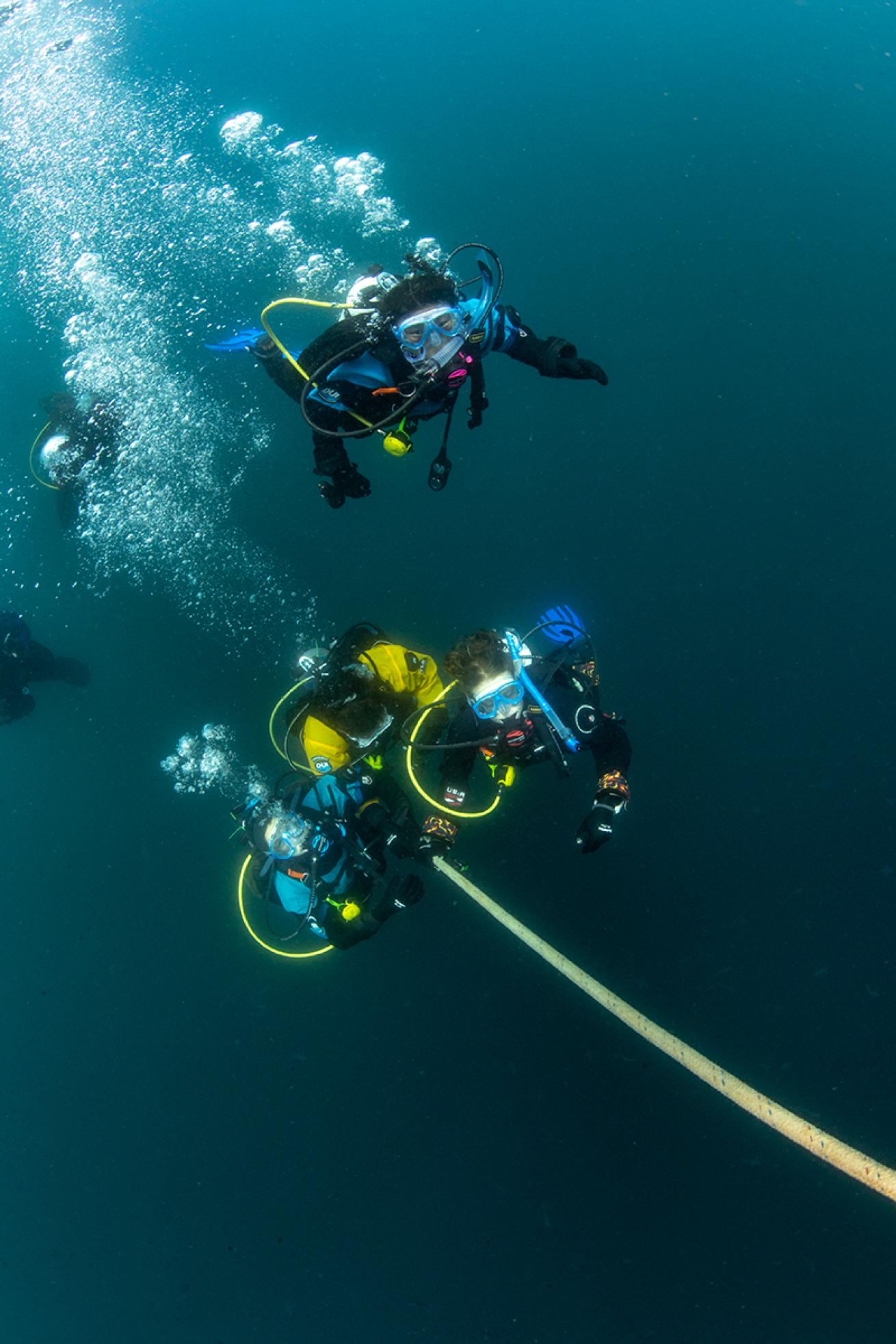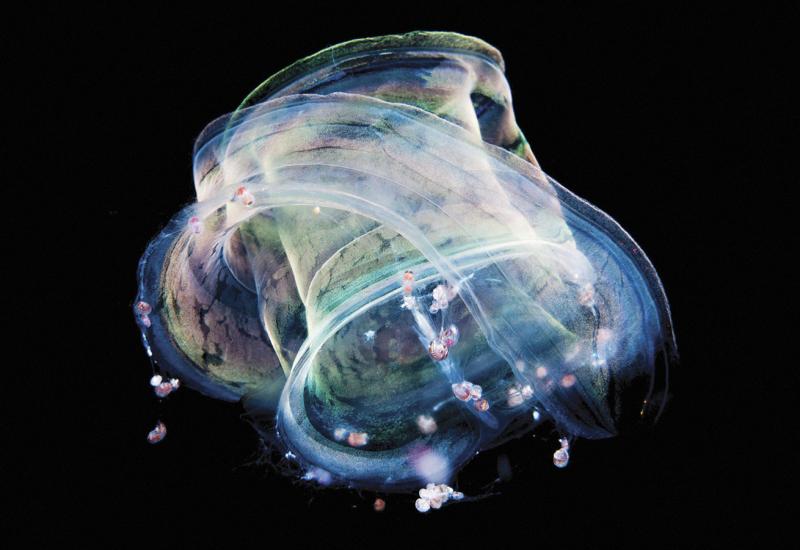How to Make Your Air Last Longer While Scuba Diving

Annie CrawleyThe more thrilling the environment, the more likely you are to unconsciously suck up air.
As scuba divers, we have a superpower. We breathe underwater, allowing us to explore the “other” 70 percent of our planet. To achieve maximum comfort and ease when we dive, we must master our breathing.
Not every situation we encounter as divers offers swimming-pool-like conditions like those in which we learned. As we continue exploring, we often experience currents and different conditions and environments. We become photographers, black-water divers, deep divers, and participate in underwater cleanups. We seek adventure. My heart races just thinking about filming an underwater feeding frenzy—and yet the golden rule of scuba diving keeps me breathing slowly, no matter what. Becoming a master of your breath helps you succeed in every underwater environment—as well as your life on land.
Slow is Pro
When learning to dive, we are taught to breathe slowly and deeply. People interpret these two words very differently. If you are a guy, you might want to forget the word deep. Usually, when a man hears the words slow and deep, he tends to fill his lungs to absolute capacity, inhaling and exhaling gallons of air in one breath. This is not necessary when scuba diving. If you naturally are a slow breather and have practiced meditation or yoga, that is the type of efficient breathing we use for scuba diving. Slow breath in, slow breath out. No matter what is happening around us, we must keep our breath under control. Shallow, fast breathers may need to breathe more slowly and deeply. Your goal on every dive is to maintain breath control.
Choosing the right reg for your diving needs can help your breathing. Imagine you have a regulator in your mouth. Take a deep breath in and out. What does your breath sound like? Are you sucking, or are you breathing? Do you expand your lungs a little? A lot? Can you hear your breath, or are you silent?
If you notice you suck air, try breathing just as you do when you are relaxed. Modern regulators are designed to deliver air with ease, at the surface and at depth. Go to your local dive store and ask to test a variety of regulators for the conditions in which you will be diving. Find the one you feel is easiest to breathe. How does it fit in your mouth? Perhaps you need a different mouthpiece. Turn your head in all directions. It’s worth your investment in time to find your personal favorite regulator because it’s your life-support system and underwater breathing apparatus.
Our breathing is directly related to how we move: When we move fast, we breathe fast. When we breathe slowly, we move slowly. Fins are what propel us through the water, and are essential to our diving. They are designed and engineered for different conditions. Test a variety of fins and boots. Make sure they fit properly. Without using your hands, you should be able to turn, pivot, slow down, speed up and stop. If you use your arms, you will breathe faster. Find the fins that match your leg strength and you will be able to maintain breath control.
Our breathing changes when we dive in new or unfamiliar conditions. A navigation or advanced class helps you know your way on every dive, which makes you a more comfortable diver. Take a boat-diving or drift-diving course before diving in currents. You will learn how to dance with the ocean. Our fins, regulators and breathing, combined with the ability to read currents, bottom composition and animal behavior, increase our competence and confidence on our dives, which translates to conserving air.
PRO TIP: Your local dive retailer has more competitive pricing than you can ever find online. They have the experience, service department and professional expertise to help you understand how regulators work in different dive conditions.
Suits, temps and air consumption
Do you have the correct exposure suit for the water temperature in which you are diving? In warm water, what are your personal needs? Some people need only a rash guard with boardshorts, others a 3mm or 5mm wetsuit with hood and gloves. You have a personal thermometer. When you are cold, you will breathe more quickly and use air faster than when dressed appropriately. If diving in the Arctic or in the winter in a cold-water destination, consider a drysuit, thicker undergarments, drysuit socks, dry gloves and an 11 mm hood. When your head, core and feet are warm, you are warm.

Annie CrawleyUse a line to control neutral buoyancy on ascents and descents, saving air.
Water conducts heat away from the body faster than air. You can be warm in cold water and cold in warm water. When diving in the tropics, bring a hooded vest and layers so you will be comfortable in a variety of temperatures. Diving in warm water, you may be exposed to upwellings and colder temperatures. Have the necessary gear in your dive bag so you can add layers if needed. When repetitive diving, our core temperature drops. Having extra layers to put on for night dives helps your comfort and breathing. Remember to add or decrease weights if you change your exposure protection, which also impacts your breathing. If you are underweighted or overweighted, you tend to suck your air.
To master scuba diving, you must understand how your breath, equipment and breathing affect every aspect of your diving life. If you are comfortable with your equipment and understand changing dive conditions, you will conserve air, maintain buoyancy and achieve longer, more comfortable dives.
Get more dive tips and tricks:










